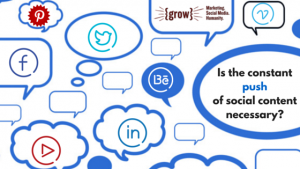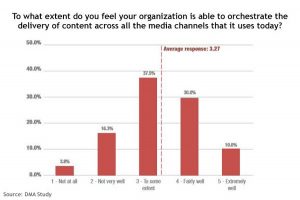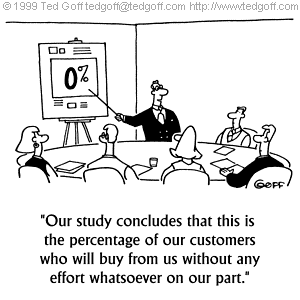 Copyright: neyro2008 / 123RF Stock Photo
Copyright: neyro2008 / 123RF Stock Photo
Marketing integration is a key factor in optimizing market performance, yet a recent study of nearly 1000 marketers found poor digital marketing integration across channels.
According to a recent report by Oracle Marketing Cloud and Econsultancy (see infographic below for details), marketers report poor integration across marketing channels threatens ROI, with only seven percent of respondents agreeing with the statement they are “very much set up to deliver effectively orchestrated cross-channel marketing activities” while 62 percent acknowledge fragmentation across digital marketing platforms. In a study by SmartInsights, results were similar, with 59 percent of companies describing their digital marketing as fragmented.
Digital Marketing Integration
So, what do we mean when we talk about digital marketing integration?
Certainly, we’re talking about the look and feel of various social profiles using a unified color scheme and images. But integration goes well beyond these simple visual cues.
Integrated digital marketing requires businesses to synergize their marketing efforts across various media in real-time. Campaigns can no longer be thought of as vaguely measureable units of marketing expenditure.
That means your marketing and IT staff work together creating a seamless customer experience. In researching this article, I ran into a post where a user responded to a PPC ad for a particular product only to find the product out of stock on the website. A remarketing campaign offered her the same product at a lower price the next day, but she found the product still out of stock and the reduced price wasn’t reflected on the website.
This example shows an obvious failure that not only wasted the firm’s time and money, but annoyed a potential client, which can have far-reaching negative consequences. The example also demonstrates that digital marketing integration goes beyond communication strategies like IMC (integrated marketing communication) to encompass delivering on the promises of marketing communications.
Measurement is also a key element in digital marketing integration. Knowing what works and how various channels work together to deliver ROI highlights the interconnectivity between platforms in the customer journey. In the Oracle study, only 19 percent of marketers measured the ROI of cross-channel marketing efforts and only 14% measured the impact of cross-channel campaigns in achieving customer retention.
Digital Marketing Integration Is Hard
Some sites offer simplistic solutions to the problem of digital marketing integration.
But integration is hard and these simplistic solutions won’t move you far enough in the integration process. Among the advice you’ll hear is:
- Create a unified marketing strategy.
- Build cross-functional teams.
- Reduce politics and ownership of certain marketing channels.
Again, good advice, but you won’t achieve digital marketing integration by implementing these solutions.
Consider these six elements of digital marketing integration from Synecoretech:
- Digital presence management
- Content marketing
- Targeted discovery
- Online engagement
- Social, mobile, local
- Performance management
Let’s agree, digital marketing integration is hard and requires a significant effort to achieve success.
Understanding The Customer Journey
Inherent in creating digital marketing integration is understanding the customer journey — the path taken by consumers between first awareness of your brand to becoming loyal customers. Understanding this circuitous path, with its diverse touchpoints across any number of channels and loopbacks in the various stages between discovery and loyalty.
Self-reports in the Oracle study show only 43 percent of marketers feel they understand the customer journey and adjust digital marketing efforts to accommodate consumers in different stages. Based on my experience, I would guess the actual number of firms doing an effective job at matching the customer journey is much lower because most firms have no clue what the customer journey even looks like.
Most firms think of the customer journey as a straightforward progression that looks something like this:
 Unfortunately, the customer journey is a much more convoluted process than envisioned in this Google graphic (which, by the way, is nominally based on their own data for search).
Unfortunately, the customer journey is a much more convoluted process than envisioned in this Google graphic (which, by the way, is nominally based on their own data for search).
This diagram shows social as the beginning of the customer journey and the corporate website as the end. But, is that accurate?
Now, if you added loops within this diagram, I think you’re getting closer to what a customer journey really looks like. Let’s take a look at a possible scenario to see what a customer journey looks like:
Sally sees a post from a Facebook friend who’s vacationing in Hawaii. She’s jealous that her friend is spending time in the sun — she looks tanned and relaxed. Later, Sally runs into her friend at a networking event and asks about the vacation. She gets a glowing recommendation from her friend and determines to consider Hawaii for her upcoming vacation.
Sally begins her exploration by visiting a travel site like Orbitz or Travelocity. (A prior bad experience with Expedia eliminates then from future travel consideration — remember the importance of customer satisfaction. Studies show a small increase in customer retention creates a large increase in ROI.) She loves looking at various hotel and resort options, but she isn’t sure.
Sally cuts and pastes URLs from various hotel and resort websites into her Facebook or Twitter streams asking her friends for feedback. She also sends her friend who recently returned from Hawaii a text asking her opinion of the various travel options.
Sally gets feedback from a couple of folks on her Facebook post, but doesn’t feel like they’re very helpful, so she goes to a review site like Yelp. There she finds opinions are all over the place with some folks really liking a resort and others hating it.
What should Sally do?
Sally visits the Facebook pages from a few of her favorite options to see great pics of their facilities. She asks a question about activities for her kids, but she never hears back.
Sally starts noticing ads on Facebook and through organic searches promoting resorts and hotels in Hawaii. A few look interesting, so she shares them with her friends hoping to get better responses this time.
A few days later, Sally gets an email from a hotel offering a discount on their Hawaiian holiday vacations. So, she books it.
How Digital Marketing Integration Makes The Sale
So, how can digital marketing integration make or break the sale in Sally’s journey?
- Encourage website visitors to signup for your email list, thus integrating your website/ social platforms with email marketing. Email is an effective means to reach out with special offers or to simply keep your brand top-of-mind as consumers journey toward purchase.
- Reach out to influencers to get them to share information about your brand. Many customer journeys rotate through social several times before closing. Consumers trust their connections and want their opinion before purchasing products. So, integrate your blogger/ customer outreach with your other digital marketing efforts to amplify your messaging.
- Engage visitors to your social platforms, answering queries in a timely manner. This sounds simple, but many brands fail at this.
- A great way to make sure Sally sees your offer when she goes to book is by offering a discount code, but some users get confused about using discount codes. So, make sure your website reflects the offer made to Sally in her email by customizing the website based on past interactions with a particular customer.
Remember, digital marketing transformed the relationship with consumers and put them in charge. Your goal is to provide them with tools to make purchases and integrate across channels to optimize market performance.
(283)









